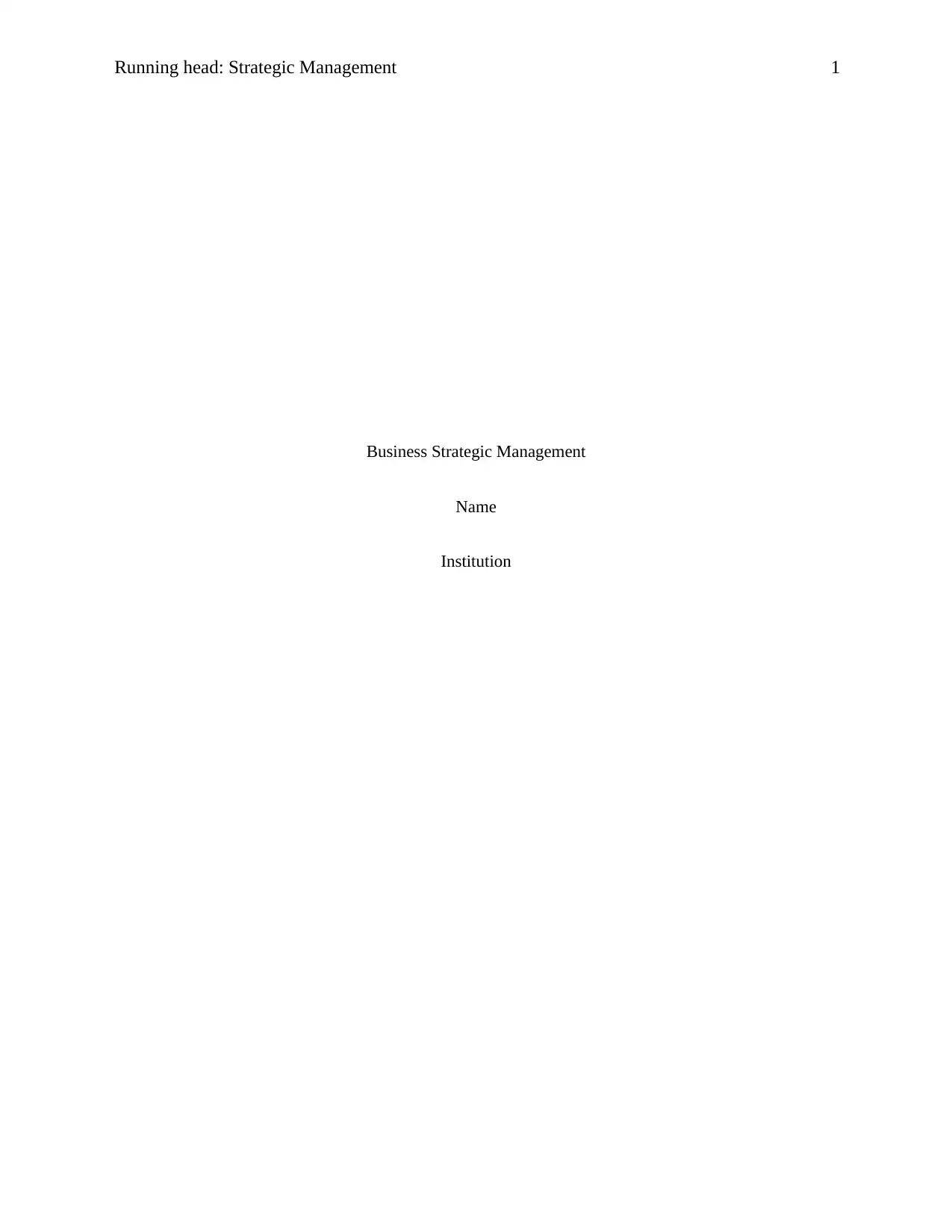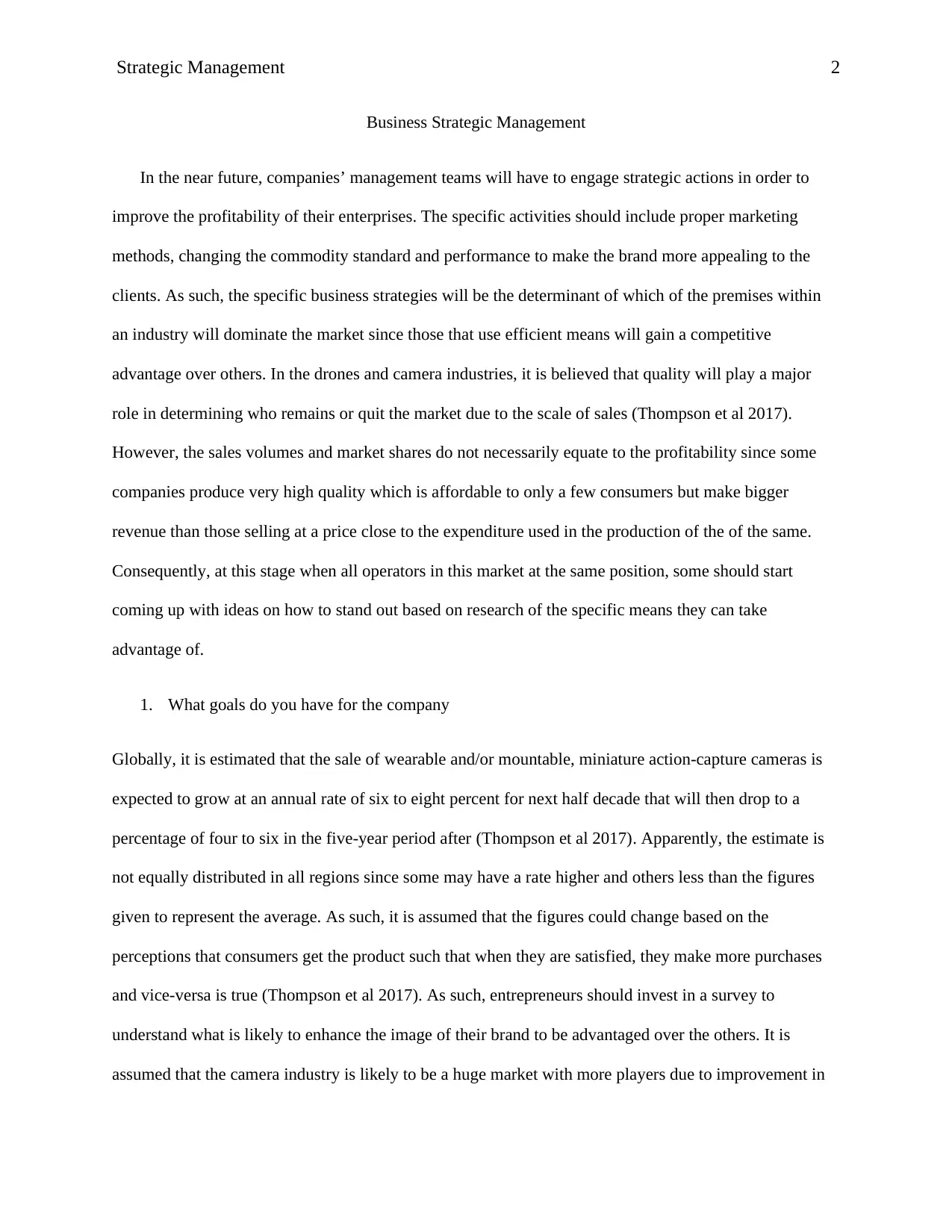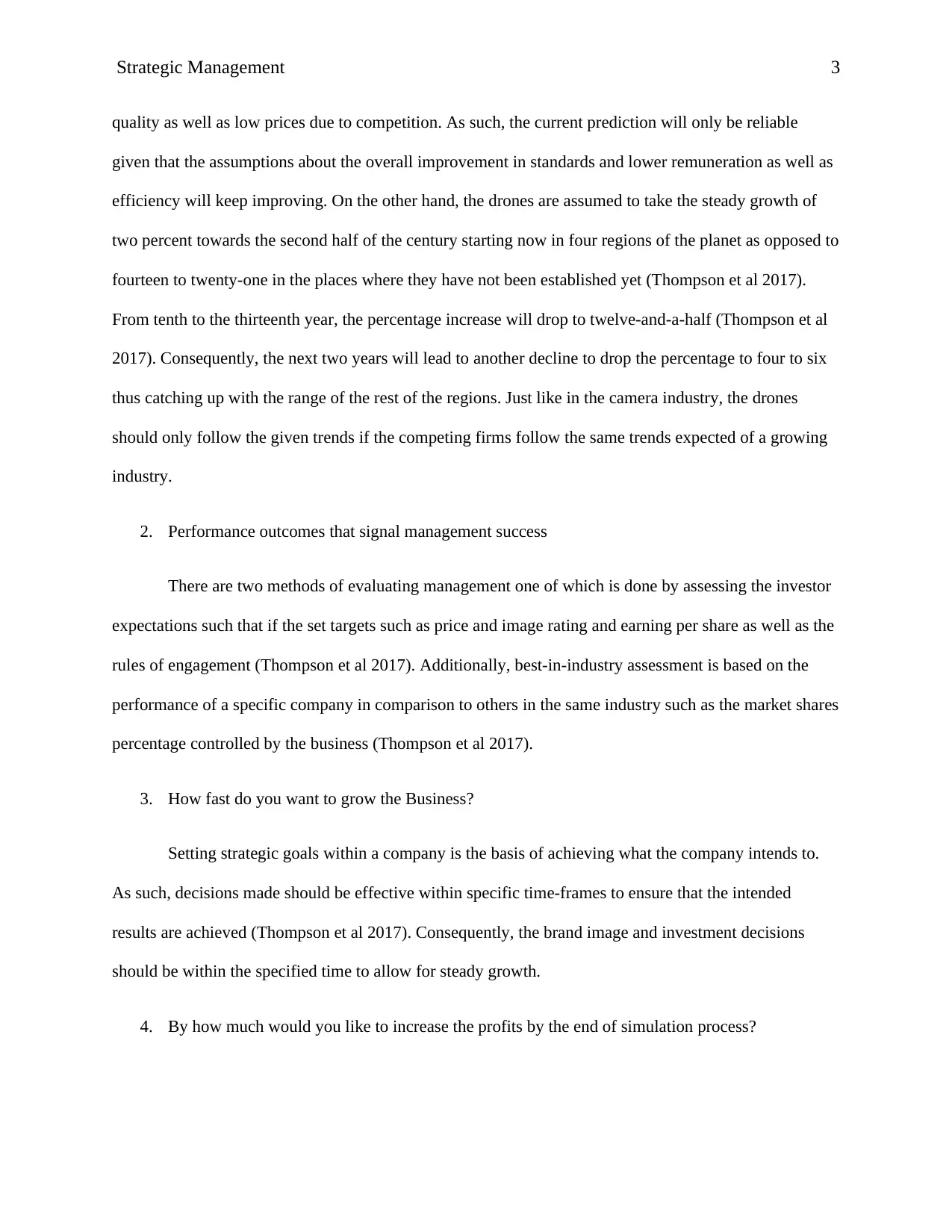Strategic Management Report: Business Growth and Performance Analysis
VerifiedAdded on 2020/03/16
|4
|896
|36
Report
AI Summary
This report delves into the realm of strategic management, focusing on the application of effective business strategies to enhance profitability and gain a competitive advantage within the drones and camera industries. It emphasizes the importance of marketing, product standards, and performance in attracting and retaining customers. The report highlights the significance of quality, market share, and sales volume, noting that these factors don't always equate to profitability. It explores various strategic goals, including market growth projections for wearable cameras and drones, based on consumer perceptions and industry trends. The report also examines performance outcomes signaling management success, such as investor expectations and industry benchmarks. Furthermore, it addresses the importance of setting clear strategic goals and achieving desired profit margins through sales, investments, and brand image improvement. References from Thompson et al. (2017) are included to support the analysis.
1 out of 4









![[object Object]](/_next/static/media/star-bottom.7253800d.svg)